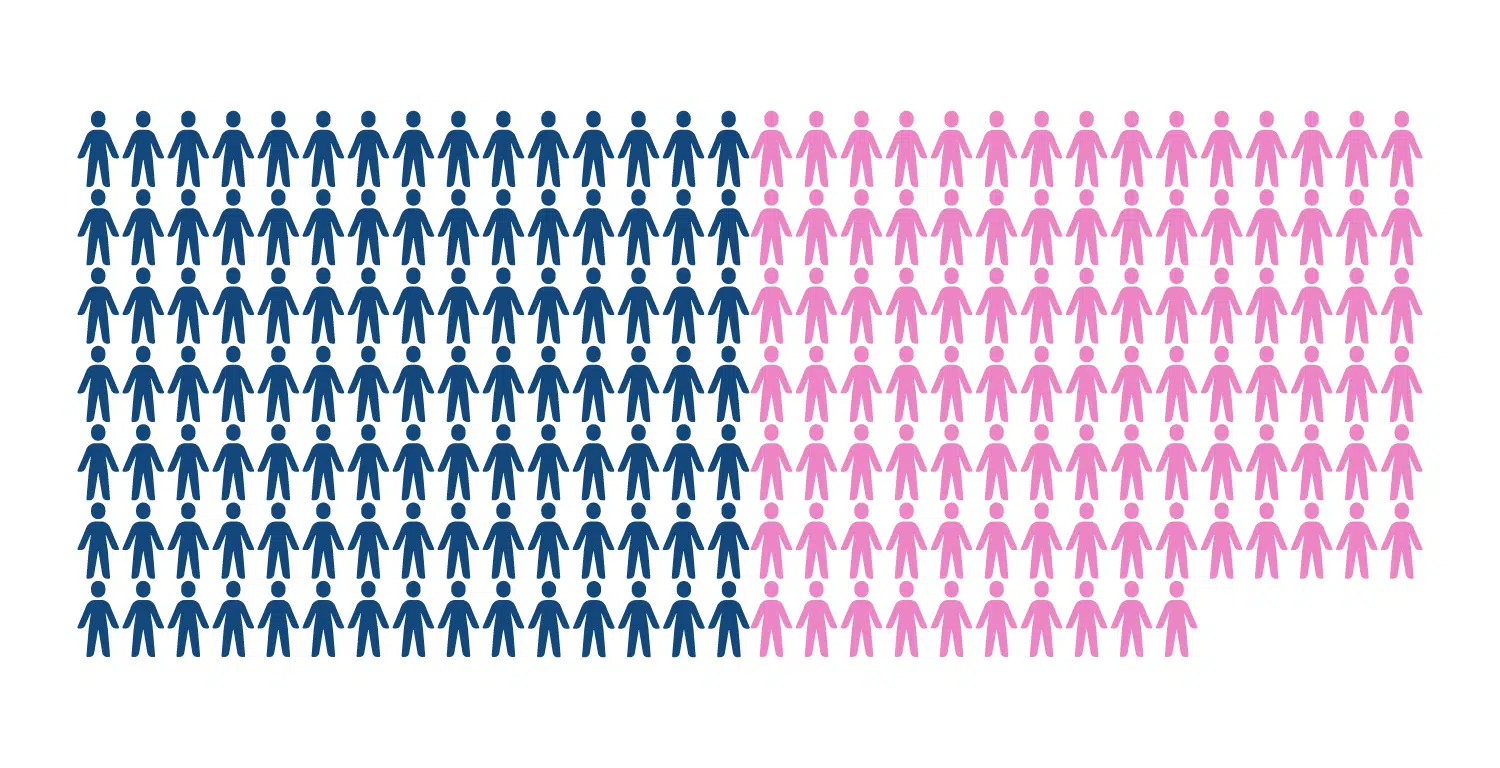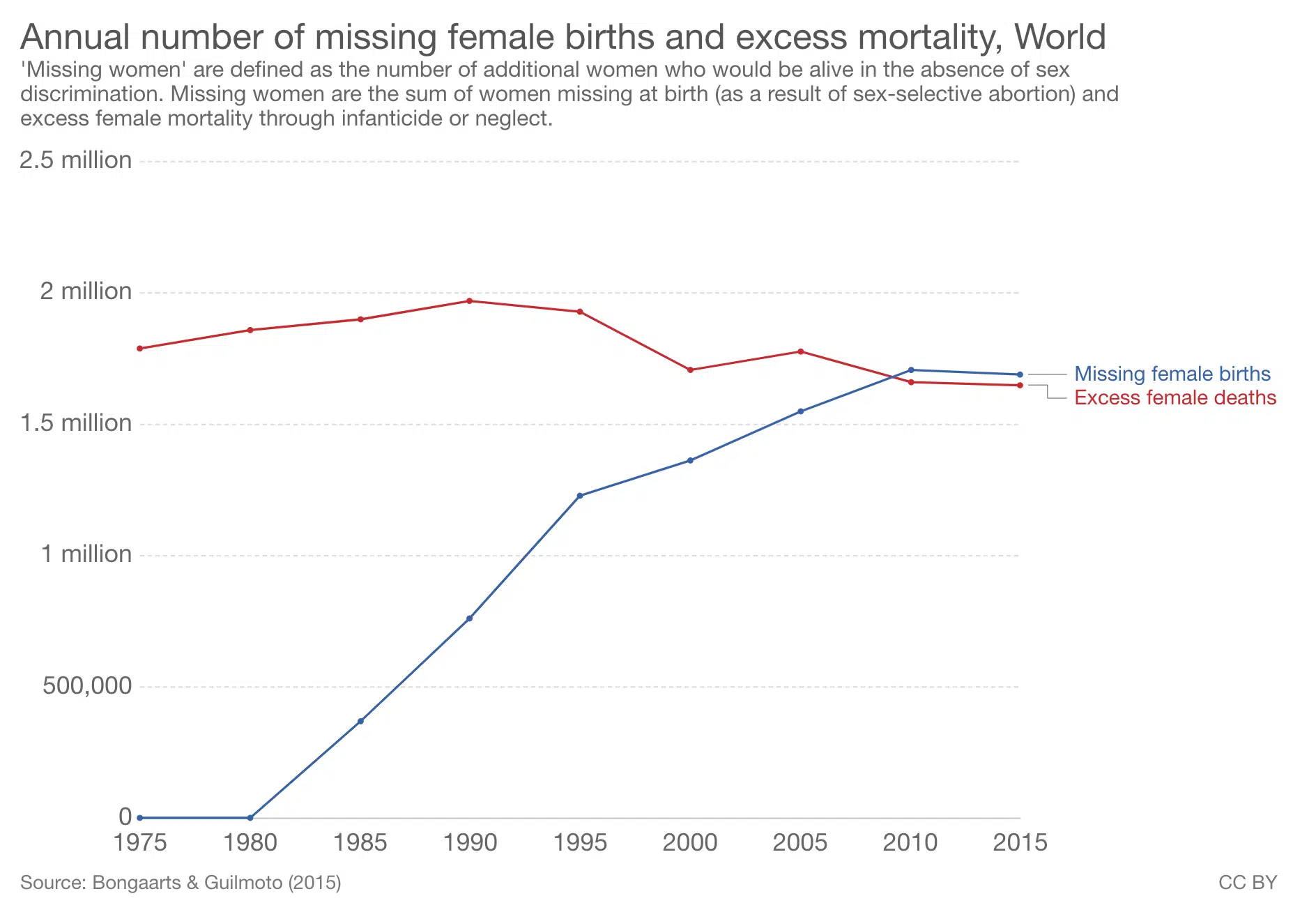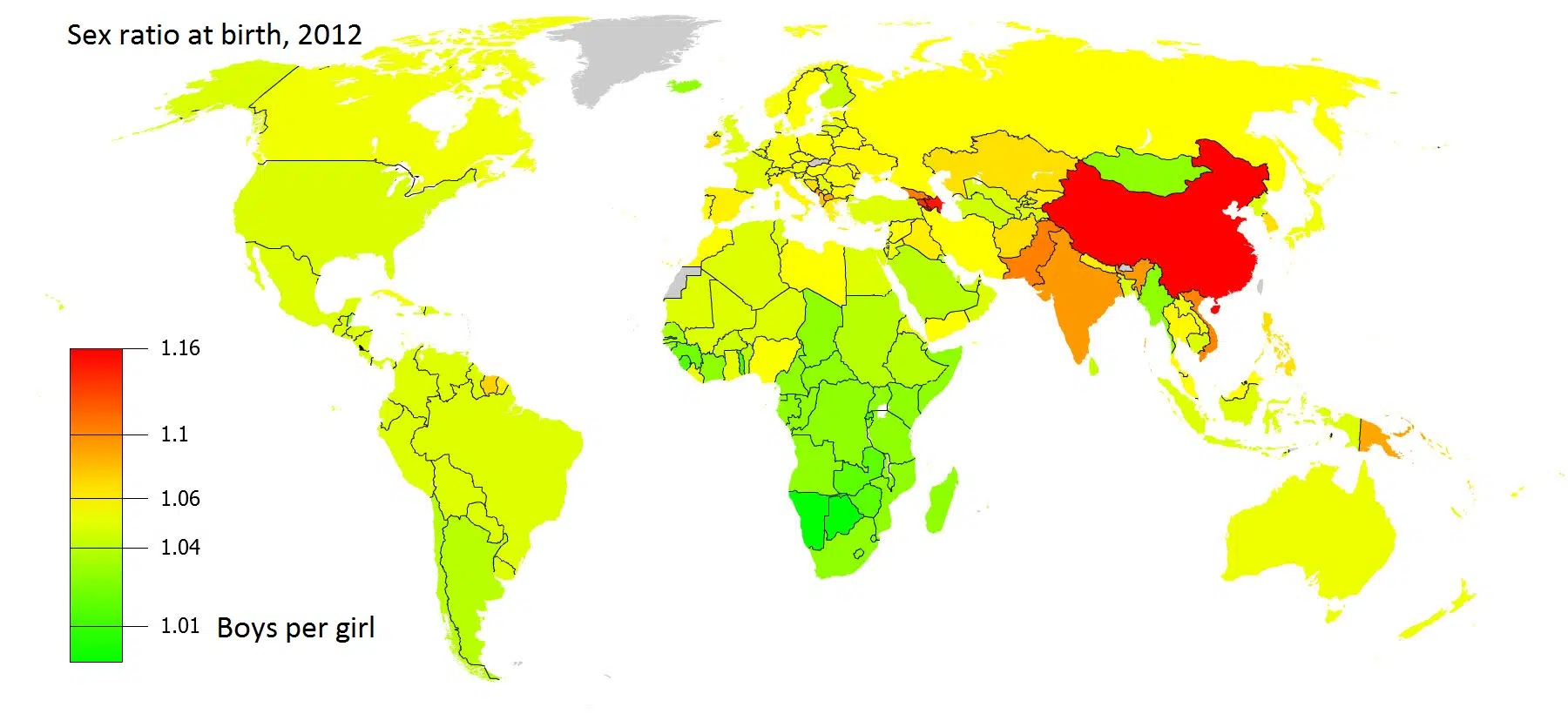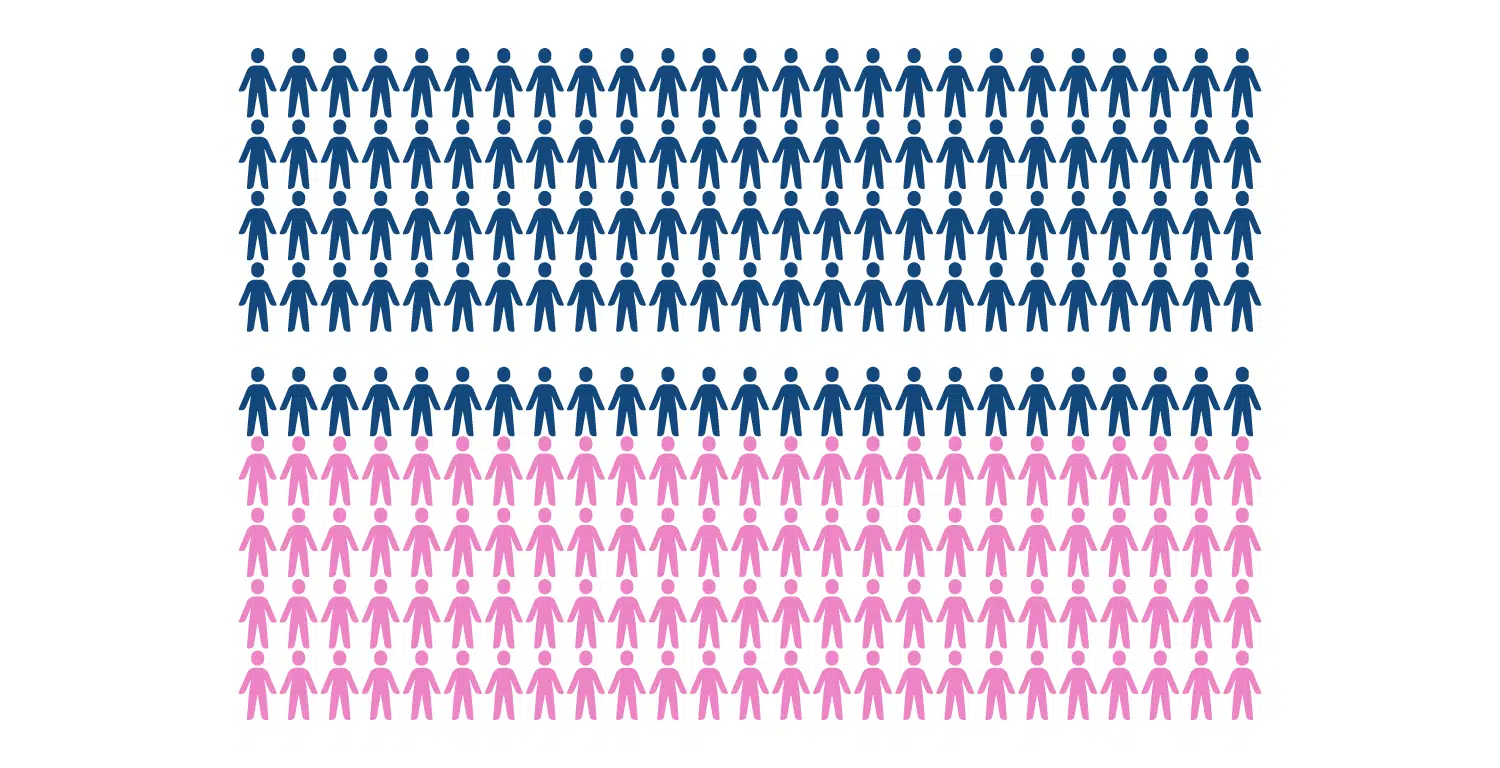In this article:
- What is sex-selective abortion?
- Why sex-selective abortion is bad
- Whether sex-selective abortion bans work
- The best way to prevent sex-selective abortion
In most human populations, around 105 boys are born for every 100 girls. This is the natural sex ratio. Under normal circumstances the ratio of boys born to girls is always near this number.

Sometimes, though, birth rates can become very skewed. In some cases this may be the result of natural causes. War and parental ages may cause changes in the sex ratio, though it’s hard to prove, or to explain why. Other times, an imbalance in the sex ratio can be a clear sign of something much more worrying.
What Is Sex-Selective Abortion?
Throughout history, many civilizations have preferred child of one sex over the other—usually, male children valued more highly than girls. In the past this has sometimes led to infanticide, neglect, and abandonment of female children. The frequency of such atrocities is notable, but rarely enough to significantly change sex ratios.
Today, the widespread availability of abortion and prenatal sex testing has led to much more frequent use of sex-selective abortion to eliminate unwanted female children. This happens everywhere, but is common in many Asian and Southeastern European countries. In these countries, sex-selective abortion has led to massively imbalanced sex ratios.

Source: Our World in Data, CC BY-SA 3.0
This issue is very evident in South Korea, China, and India. In South Korea, the country’s early adoption of sex-selective technologies led to soaring sex imbalances in the 1980s. At times, this imbalance was as high as 125 boys for every 100 girls born.
Similar numbers can be observed in China a decade or so later, though China’s situation was complicated by the one-child policy. In India, the northern states follow this trend as well, though southern states have more natural ratios.
In many of these countries, female births decline significantly the more children a family has. While there is usually preference for boys over girls with the first child, the preference grows massively with each additional birth. In China, some provinces had over 160 boys born for every 100 girls in second births. In South Korea in the 1990s, third-born children were male at a rate of nearly 2-1.
Though most often observed in Asian countries, sex-selective abortion impacts birth ratios around the world. The United States also struggles with the issue to some degree. Often, the practice may be rooted in immigrant cultures.
Why Sex-Selective Abortion Is So Bad
Perhaps the most obvious consequence of sex-selective abortion is simply the death of so many female children for no reason other than their sex. Worldwide, it is estimated that sex-selective abortion has resulted in at least 140 million missing female births, perhaps more. The destruction of so many women’s lives is no small thing.
Effects on Society
On a societal level, moreover, this sex discrimination can result in massive issues for entire countries. In China, imbalances in sex ratios has been shown to drastically increase crime. There are multiple reasons for this, but certain factors stand out in particular. First, men may simply be more prone to committing crime than women. However, this explanation alone cannot account for all of China’s crime.

Source: M. Tracy Hunter, CC BY-SA 3.0
Additionally, it’s likely that stiffer competition for relationships encourages risk-taking. The inability for many men to marry may also eliminate much of the civilizing effect marriage has on individuals and society.
Effects on Women
Not all research shows that sex-selective abortion has these effects on society, however. In some cases, sex imbalance does not appear to result in increased crime or violence, but only higher rates of depression and lower self-esteem.
When it comes to impacts on women, research has shown that sex imbalances may also lead to increased rates of rape and sexual harassment. Though some believe that sex imbalances will lead to women having more power in relationships, evidence usually points to the opposite. Instead, women face increased abuse and control by their partners, including suspicion, reduced freedom of movement, and more.
Shortages of women also tend to reinforce gendered female roles at the expense of a woman’s own freedom and wellbeing. Often, high sex ratios result in more girls being pulled out of school, prohibited from working, and generally constrained to reproductive and domestic roles. To quote from one study that analyzed over a hundred countries:
High sex ratios also serve to delimit and constrain the roles women occupy. Hence, where women are in short supply, their levels of literacy and labor-force participation are low, both relative to men in their own society and to women in low-sex-ratio societies. Their suicide rate, relative to men’s, is also high. It would appear, then, that given the current distribution of structural power, the relative undersupply of females entails few benefits and many costs to women.
The effects of sex selection are far-reaching, and sometimes unexpected. Indeed, gender imbalance may even contribute to international violence and war. Yet the most direct cost is to the individual woman. For so many girls to lose their lives for no reason other than their gender is truly monstrous.
Do Bans on Sex-Selective Abortion Work?
The severe negative effects of sex imbalance have driven many governments to ban sex-selective abortion. Even in parts of the world where abortion remains legal, many governments have taken action. Actually preventing sex-selective abortions, however, is not always simple.
Some of the difficulties with banning sex-selective abortion are fairly obvious. The first is that it can be virtually impossible to establish why a woman is actually aborting her child. In countries where abortion is legal but sex-selective abortion is not, the latter is almost impossible to prevent. Because of this, some countries plagued by the issue have attempted to put a stop to sex-selective abortion by banning prenatal sex identification. These laws may help, though many studies argue that such bans are frequently ignored and poorly enforced.
Whether prenatal sex identification bans are wholly effective or not, they do produce some results. In India, studies have shown that the ban on sex testing notably reduced sex ratios. Without such laws, over 100,000 female children, perhaps more, would likely have not survived. In South Korea, such laws have also been linked to declines in the ratio of male births. This success is likely due to strong enforcement of the laws, including the suspension of physicians’ licenses for sex testing.
While such results are promising, certain studies have argued that bans on sex-selective abortion may have unintended consequences. In some research, children who would have otherwise been aborted are undervalued by their parents. They can be slightly less likely to complete school and experience less support from parents and family, while resources are often directed more toward sons at the expense of the daughters.
Nevertheless, overall the correction of gender imbalances is highly beneficial to societies. And on an individual level, a female child saved is no small thing.
Though problems with sex ratios are less prevalent in western countries, many still try to prevent sex-selective abortions. In the United States, eleven states currently ban sex-selective abortion at any point.
While these protections are admirable, they typically have no means of effective enforcement. It is usually impossible to prove that an abortion was performed because of the child’s sex. Such laws rely upon the woman informing the abortionist that she is seeking an abortion for the purpose of sex selection, and the abortionist not performing the procedure because of this information. Hence, laws against sex-selective abortion don’t appear to have any real effect.
What Should We Do To Prevent Sex-Selective Abortions?
While bans on prenatal sex testing have produced results where abortion remains legal, such bans are not realistic in most western countries. For many parents, knowing the child’s sex is an important moment in pregnancy; nearly half of all Americans want to know the sex of their child. Many view it as important for emotional attachment and helpful for preparing for the child, or are simply driven by curiosity.
So long as abortion remains broadly legal, it will remain difficult to prevent sex-selective abortions without banning prenatal sex testing. Yet, while the necessity of preventing skewed sex ratios is undeniable, it is perhaps best not pursued by banning fetal sex testing. Doing so bars the use of an otherwise innocent technology that can help parents connect with their child. Worse, it is ultimately only a bandaid for the underlying problems.
The widespread availability of abortion has led to a culture that prizes the ideal child. Healthy, convenient, planned, and most of all, wanted. Anything can make a child less than “ideal”: inconvenient timing, financial issues, fetal disability, and many other things. Though it’s rarely admitted, the sex of the child is as much a factor in these expectations as everything else.
If a child is unwanted, eliminating them is often seen as not only acceptable, but even good. For example, the pro-abortion research institute Guttmacher has proudly held up declining adoption rates as evidence that abortion has reduced unwanted children. This, they argue, may lead to better lives for those who survive.
Yet, in the pursuit of the ideal wanted child, the lives of actual children are increasingly devalued. With shrinking family sizes and laws like China’s one-child policy, there is ever more pressure for the children we do have to be perfect. But real people aren’t perfect, and our children are not always exactly what we want them to be.
As we can see from the effects of sex-selective abortion, the impact of removing the unwanted is not always as positive as we might think. Everyone suffers, not just those girls and boys that we abort, but those in the world they leave behind as well.
If we wish to prevent sex-selective abortions, and discriminatory killing in general, we must build a culture which values all lives, not just the life we view as perfect.
William has worked as a professional writer for pro-life organizations since 2018, including Human Life International, Celebrate Life Magazine, and Pro-Life Utah. He has also written for the Bipartisan Press and edited for several blogs and websites. William is the founder and president of the Lifeguard Initiative, a pro-life group that informs the public, helps pregnant women in need, and works for pro-life legislation in many states.







